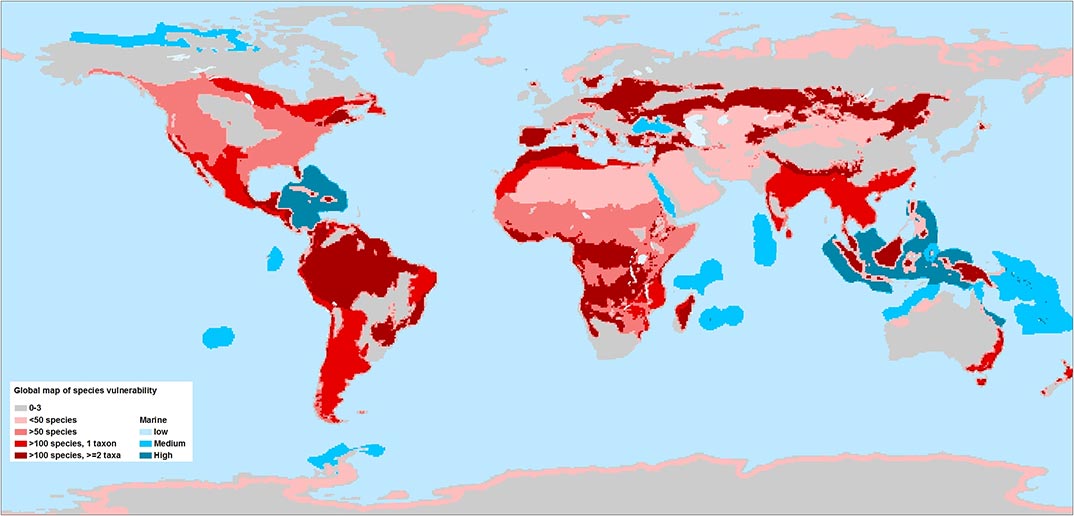The impacts of anthropogenic climate change on biodiversity are most evident in natural systems (IPCC 2014, p. 40), and manifest as changes in both average climate and frequency of extreme weather events (see Box 6.3). One estimate suggests that up to one in six species could be threatened with extinction by 2050 if current warming trends continue (Urban 2015). However, known impacts are not distributed evenly and our knowledge of impacts remains incomplete (Figure 6.8).
Natural disasters, such as earthquakes and tsunamis, or floods, landslides, wildfires and droughts following extreme weather events kill and injure hundreds of thousands of people a year, cause widespread destruction to ecological habitats, and threaten wildlife populations with local extinction. Following the 2011 Great East Japan earthquake and tsunami, there was an overall decline in local species diversity, and coastal forests and other vegetation on sandy beaches and low-lying coastal areas were severely damaged (Miura, Sasaki and Chiba 2012; Hara et al. 2016). The loss of natural coastal habitat, such as mangrove forest and coral reefs, through pollution, habitat transformation and increased sea surface temperatures, can further undermine protection of coastlines from waves, storm surges and coastal erosion. When communities are rapidly rebuilt post-disaster, building material is often gathered unsustainably, posing an additional threat to local habitats, and communities can be relocated to environmentally sensitive areas.
In response to rising temperatures, species may move to cooler locations or alter their phenology to flower, breed or migrate sooner (Parmesan 2006; Scheffers et al. 2016). Evidence suggests they are doing both: species are moving, on average, 16.9 km per decade to higher latitudes or 11 m per decade upward in elevation (Chen et al. 2011), and advances in flowering phenology are suggested to be between 2.3 and 5.1 days per decade (Wolkovich et al. 2012; IPCC 2014). There is increasing speculation that such climate-induced shifts in distributions and phenologies might cascade through trophic interactions, resulting in species asynchronies, such as between flowers and their pollinators. An analysis of over 10,000 time series suggests climate sensitivity (i.e. phenological shift in response to climate change) differs among trophic groups (Thackeray et al. 2016), but data on interacting species remains sparse (Kharouba et al. 2018).
In the marine environment, warming and acidifying oceans are associated with coral bleaching events, with unprecedented pan-tropical bleaching recorded during 2015-2016 (Hughes et al. 2017) (see Section 7.3.1). Ocean acidification may also have negative impacts on other marine systems, including mussel beds and some macroalgal habitats (Sunday et al. 2017). Warmer waters additionally impose direct metabolic costs on reef fish, reducing swimming capacity and increasing mortality rates (Johansen and Jones 2011). In polar regions, decrease in sea ice and greater surface run-off may increase primary and secondary productivity, altering food-web dynamics (Post et al. 2013), and increase the probability of the establishment of invasive species (Duffy et al. 2017) (see Section 4.4.2).
